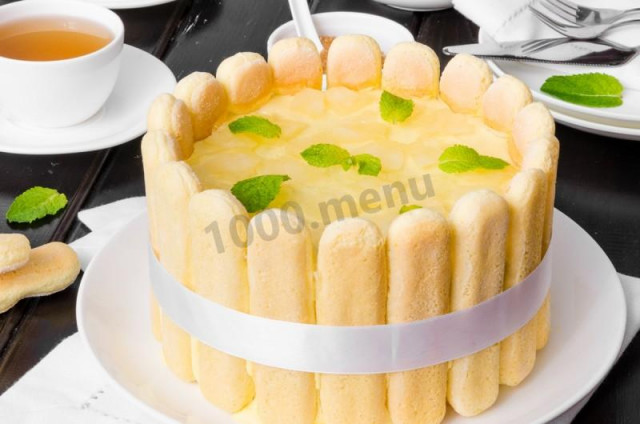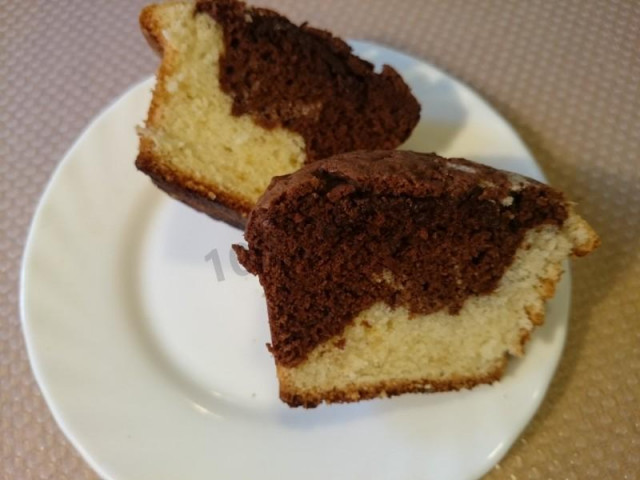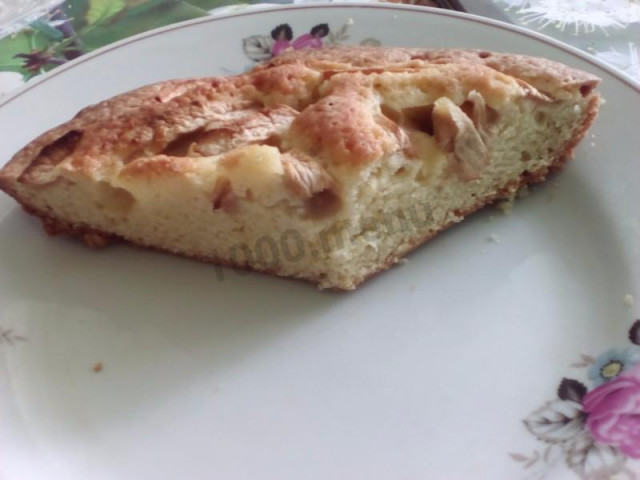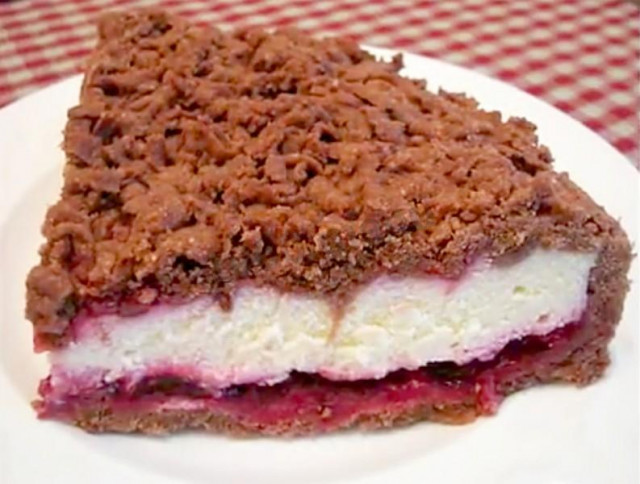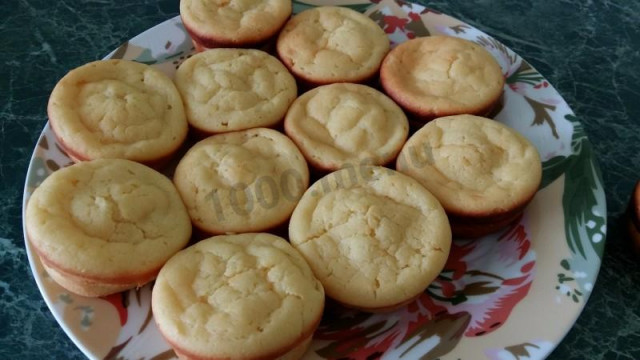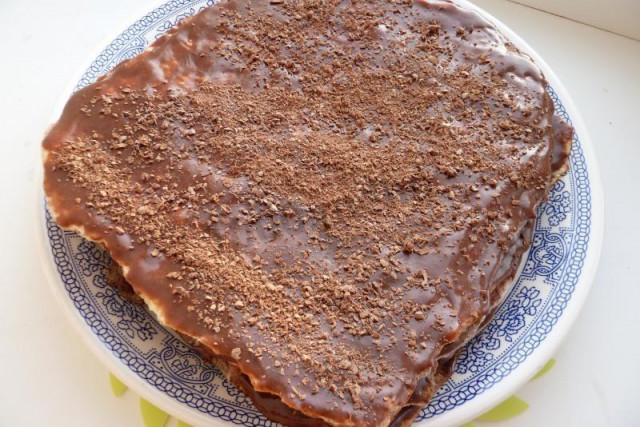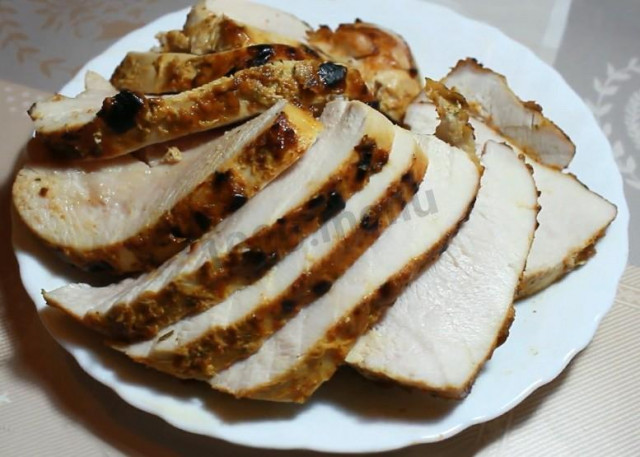Composition / ingredients
Step-by-step cooking
Step 1:
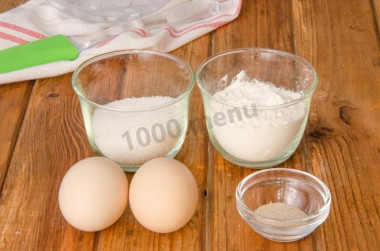
Prepare a sponge cake.
Step 2:
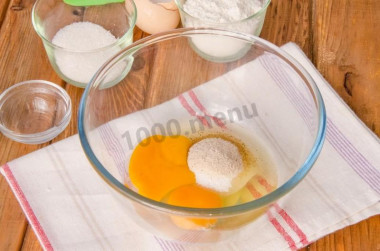
In a bowl, combine eggs, sugar and vanilla sugar together.
Step 3:
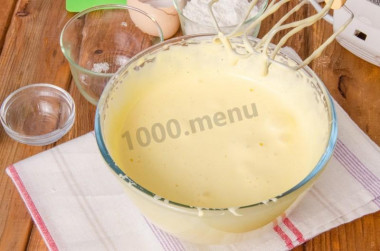
Beat eggs with a mixer for 5-7 minutes. The eggs should turn into a very lush and thick foam.
Step 4:
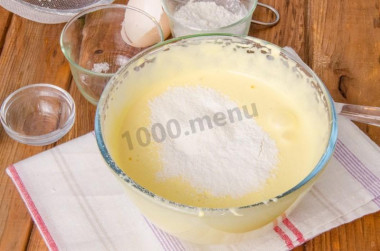
Add the sifted flour.
Step 5:
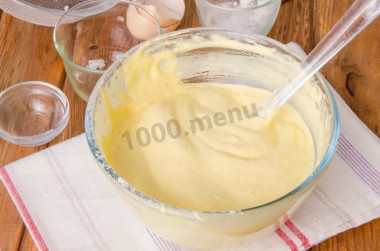
And gently mix it with a spatula or whisk, we try to act carefully and gently so that the egg mass does not lose volume.
Step 6:
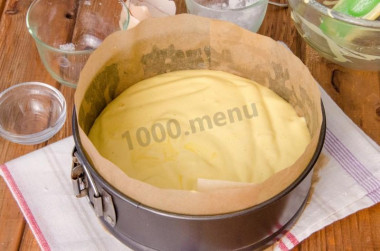
Fill the prepared dough with a mold with a diameter of 18 cm. By the way, we prepare the biscuit baking dish in advance, line it with paper or grease it with oil and dust it with flour.
Step 7:
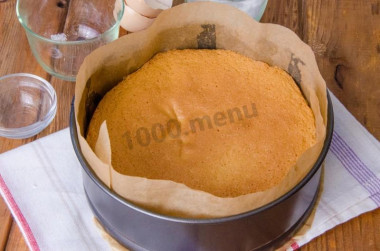
Bake the sponge cake for 20-25 minutes at 180 C until ready. The time, by the way, may vary, depending on how much the biscuit rises. We check the readiness with a skewer. Let the biscuit cool slightly in the form.
Step 8:
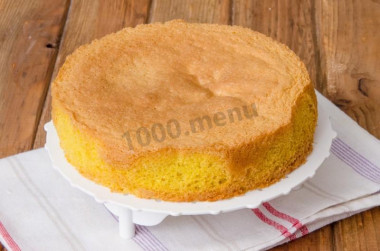
And then we take it out and put it on the grill until it cools down completely.
Step 9:
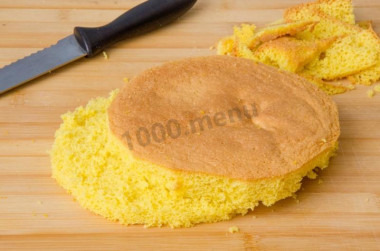
Cut the cooled biscuit in a circle, reducing it to a diameter of 16 cm (not necessary) and cut the biscuit into 2 equal parts.
Step 10:
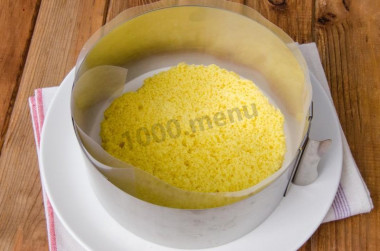
We take the form in which the biscuit or pastry ring was baked, we line the sides of the ring with a special tape or wrap it with a film, or leave it just like that. We install the ring on the dish, put one half of the biscuit on the bottom.
Step 11:
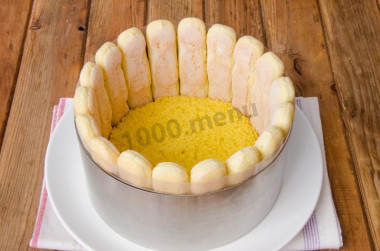
We spread Savoyardi cookies along the sides in a circle. I spread the sugar crust inside, so it turns out a more neat look from the outside. If desired, this step can be omitted, it is not necessary to do it at all.
Step 12:
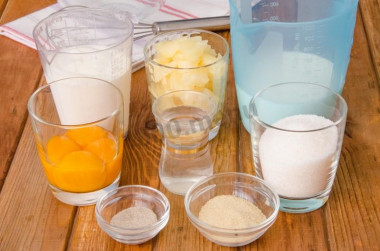
Let's prepare the Bavarian mousse.
Step 13:
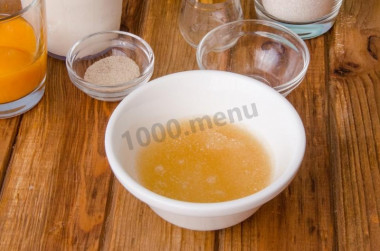
Soak gelatin in water (we take boiled, cooled water) and leave it to swell.
Step 14:
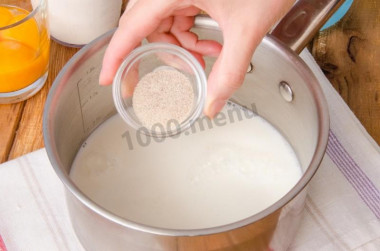
Pour milk into a saucepan and add vanilla sugar to it. We put the saucepan on the fire and bring the milk with vanilla to the first signs of boiling.
Step 15:
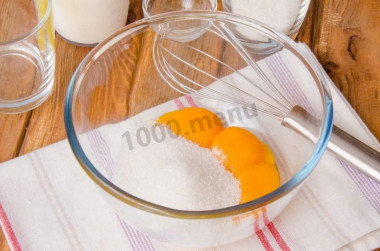
While the milk is heating, combine the egg yolks with sugar.
Step 16:
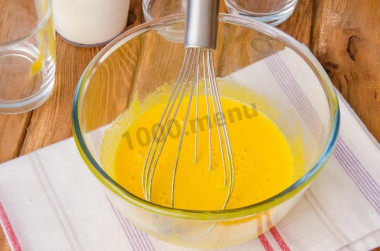
And rub everything with a whisk.
Step 17:
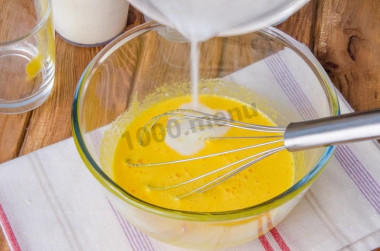
When the milk boils, remove the saucepan from the heat and gradually pour it into a bowl with the yolks, while constantly stirring the yolks with a whisk.
Step 18:
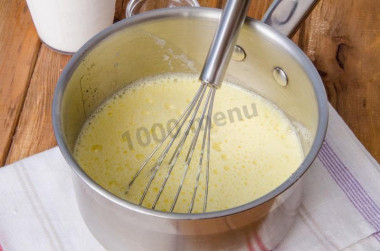
Pour the mass back into the saucepan and put it on a small fire.
Step 19:
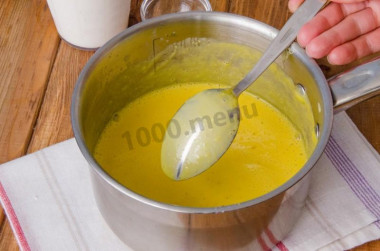
Brew the cream, stirring constantly, until thickened. We do not bring the mass to a boil, otherwise the yolks will simply curdle. The finished cream is similar in consistency to condensed milk. To check the readiness, dip a spoon into the cream and swipe your finger along the back side, if the trace remains clear, then the cream is ready.
Step 20:
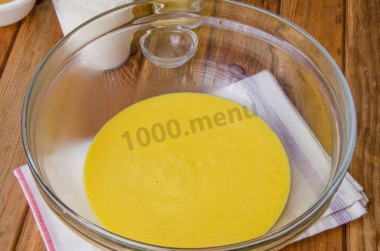
The finished custard part is immediately poured into a bowl and left to cool.
Step 21:
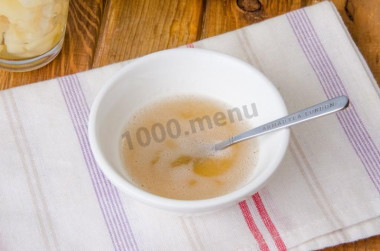
Swollen gelatin is heated in the microwave or on the stove until completely dissolved. Do not boil the gelatin solution!
Step 22:
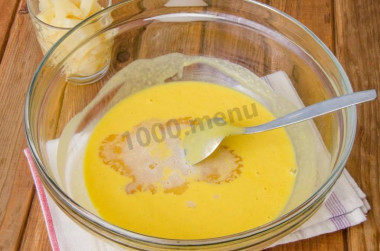
Pour gelatin into the still warm custard part and stir well. Leave to cool to room temperature.
Step 23:

Canned pineapples are crushed with a knife.
Step 24:
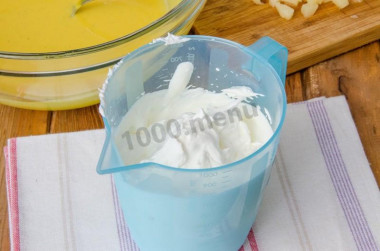
Whisk the heavy cream until a thick cream is obtained.
Step 25:
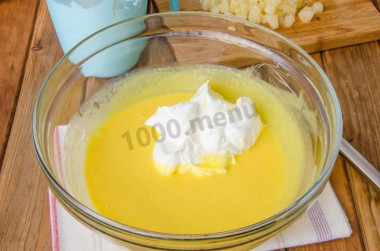
In the cooled custard part, we introduce fatty cream.
Step 26:
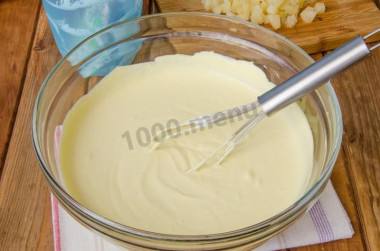
Mix with a whisk until smooth.
Step 27:
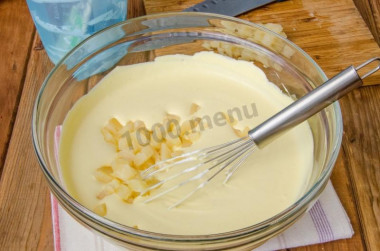
Add the chopped pineapples and stir.
Step 28:
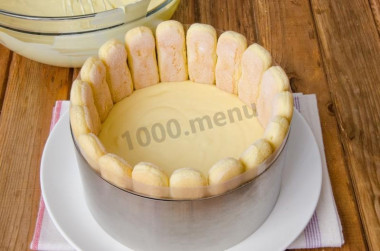
We put half of the whole Bavarian mousse in the prepared form.
Step 29:
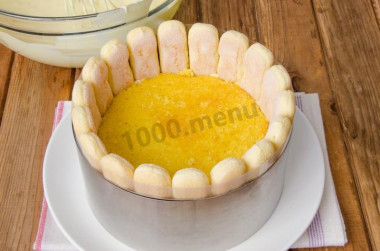
Put the second part of the biscuit on top.
Step 30:
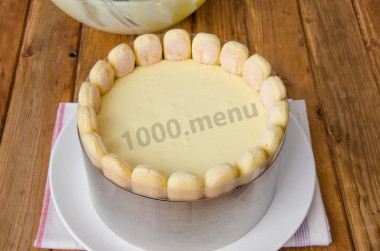
And again spread the rest of the mousse. We level the surface and send our pineapple cake to the refrigerator for at least 1 hour so that the cake grabs on top.
Step 31:
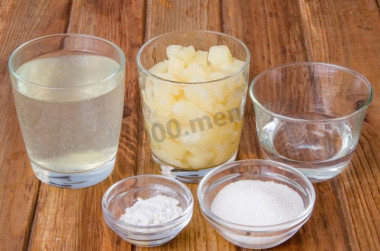
Prepare the jelly for pouring the cake on top. I used a special quick-setting jelly for the cake to prepare the filling and acted according to the instructions on the package, but depending on the manufacturer, working with such jelly may differ.
Step 32:
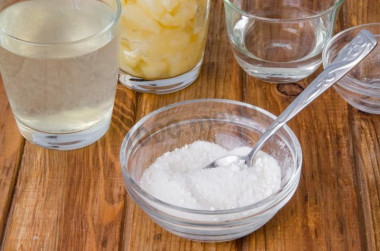
So, mix the jelly mixture with sugar.
Step 33:
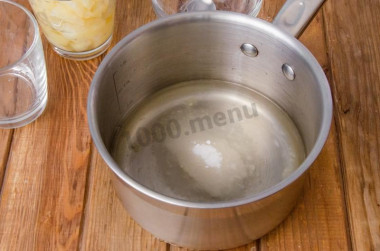
Pour syrup from canned pineapples and water into a saucepan, pour a mixture of sugar and jelly.
Step 34:
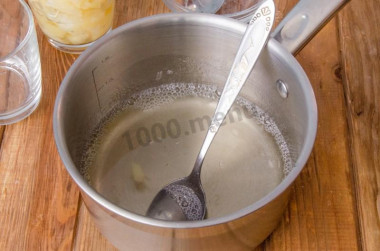
Stir thoroughly, put on fire, bring to a boil and cook for 1 minute. Remove from the heat and leave to cool for a couple of minutes.
Step 35:
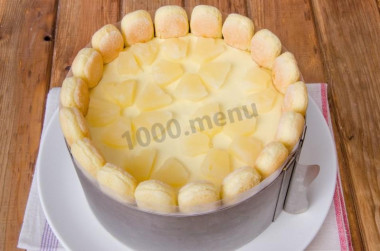
Meanwhile, quickly decorate the top with pineapple slices.
Step 36:
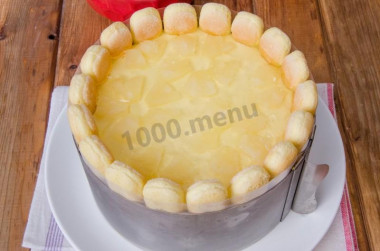
Fill the pineapples with a layer of still hot jelly. Pour the jelly with a spoon in small portions so that the mousse does not start to melt from the high temperature. We send the cake to the refrigerator for at least 4-5 hours, the cake should grip well.
Step 37:
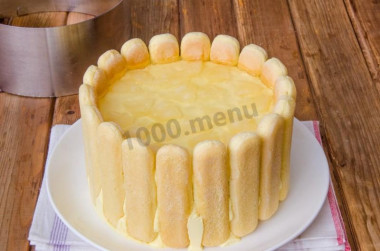
We release the finished cake from the sides and remove the pastry tape.
Step 38:

Our pineapple pineapple cake is ready!
Step 39:
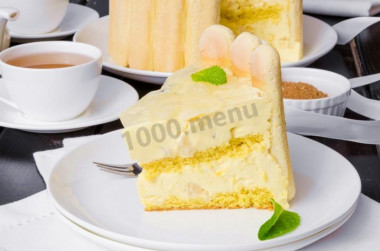
And this is how it looks in the cut. The cut was slightly damaged, since I cut the cake after 2 hours, since there was no time to wait, but it didn't affect the taste at all! Enjoy your meal!
Caloric content of the products possible in the composition of the dish
- Whole cow's milk - 68 kcal/100g
- Milk 3.5% fat content - 64 kcal/100g
- Milk 3.2% fat content - 60 kcal/100g
- Milk 1.5% fat content - 47 kcal/100g
- Concentrated milk 7.5% fat content - 140 kcal/100g
- Milk 2.5% fat content - 54 kcal/100g
- Chicken egg - 157 kcal/100g
- Egg white - 45 kcal/100g
- Egg powder - 542 kcal/100g
- Egg yolk - 352 kcal/100g
- Ostrich egg - 118 kcal/100g
- Pineapples - 49 kcal/100g
- Canned pineapples - 57 kcal/100g
- Whole durum wheat flour fortified - 333 kcal/100g
- Whole durum wheat flour, universal - 364 kcal/100g
- Flour krupchatka - 348 kcal/100g
- Flour - 325 kcal/100g
- Granulated sugar - 398 kcal/100g
- Sugar - 398 kcal/100g
- Jelly - 80 kcal/100g
- Gelatin - 355 kcal/100g
- Water - 0 kcal/100g
- Cream 35% - 337 kcal/100g
- Cream 40% - 362 kcal/100g
- Egg yolks - 352 kcal/100g
- Vanilla sugar - 379 kcal/100g
- Savoyardi - 378 kcal/100g
- Pineapple juice - 48 kcal/100g

